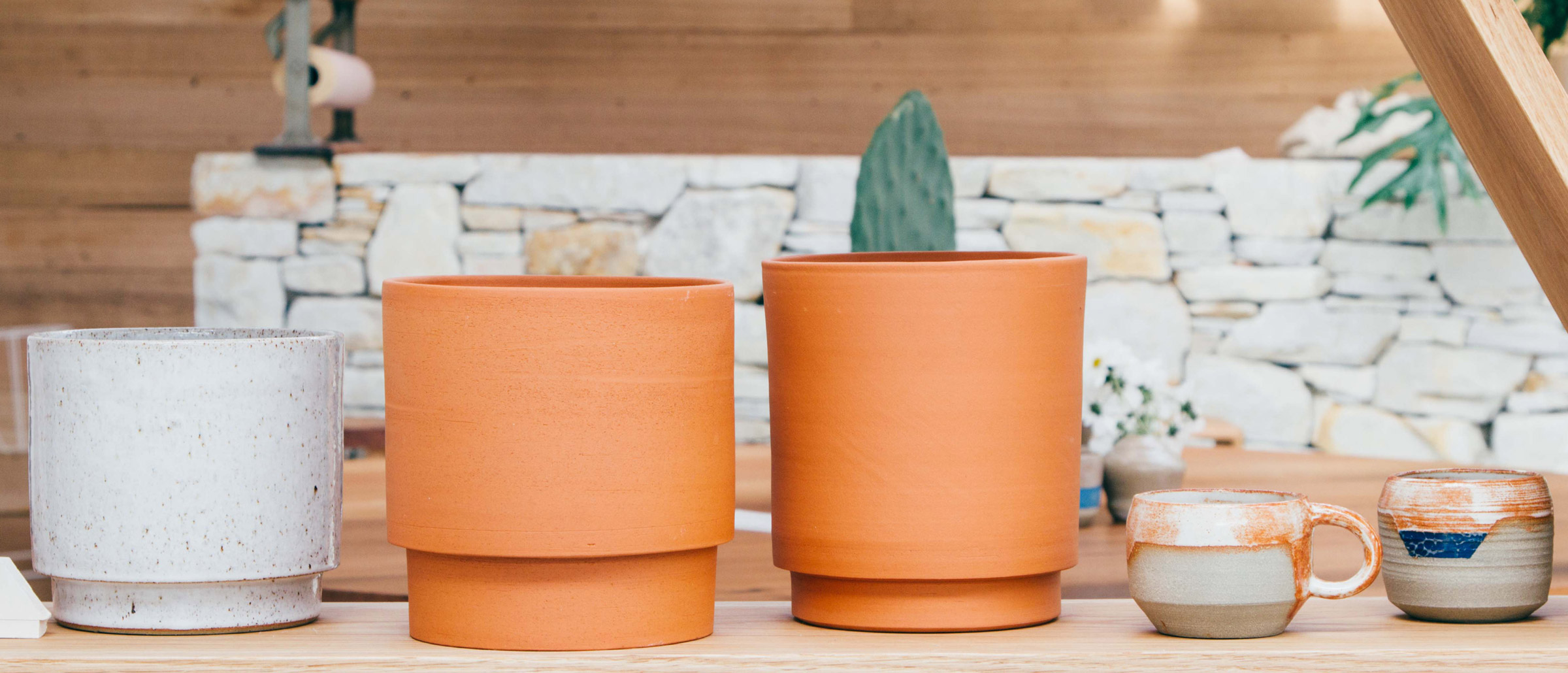How-To: Pressing Flowers with Beci Orpin

- Words by
- Beci Orpin
I am an avid collector of many things, especially old books. In fact, I rarely walk out of an op-shop without one. One of my favourite things about old books, quirky typesetting and old-school printing aside, are the occasional surprise discoveries found within their pages. One time, it was some flattened Easter egg wrappers from the 1940’s, another time a ‘Get Well Soon’ card. But, the best surprise is finding pressed flowers.
I used to press flowers with my grandma, but I remember never having the patience to wait the weeks and weeks before the flowers were completely flat and dry. Hence, I was very happy to discover whilst researching this D.I.Y that there are several methods of pressing flowers, some of which allow you to cheat, so you don’t need to wait weeks and weeks. Lucky for me, as I still have as much patience as a 5 year old.
YOU WILL NEED:
Flowers / foliage / botanicals – ones with flat petals are best (see a list here). My favourites were pansies, wattle blossoms and flowering weeds I found on the bike path – they looked so pretty once pressed.
Tips:
- Flowers should be as freshly picked as possible, to prevent browning.
- Don’t pick themtoo early in the morning, as they will still have dew on them. The extra moisture from the dew can cause them to go mouldy during the pressing process.
- Flowers should also have just bloomed or be just about to bloom – they will continue to open as they dry and if they are too mature they may lose petals.
- If the flowers have obvious stamens, remove them before pressing to prevent staining.
- Foliage can press beautifully as well, as can more fleshy specimens like succulents. They just take more time and experience.
Paper or card – can be blotting paper, coffee filter, printer paper, several layers of tissue paper (I found layers of tissue gave the best results).
Book / Microwave / Iron – depending on method.
Tweezers for handling smaller flowers once dry – they can be very delicate.

METHOD 1: Pressing in a book (or a flower press)
This is the easiest, but slowest method.
- Open your book and place one sheet of paper on each side of the book
- Place your flowers on one piece of the paper, make sure they are not overlapping (unless you want them too), and then close the book
- Weigh down the book with heavier books or bricks.
- After 1 week – change the papers
- Leave for a few more weeks until the flowers are completely dry. Try to resist temptation of checking them (unless changing paper) as this can disturb the flowers.
Tips:
- The flowers can leech small amounts of liquid onto surrounding pages so don’t use book you don’t want to get damaged, or use several more sheets of paper if you are concerned about this.
- The quality of the paper in the book can make a difference – e.g. phone books are not great as their paper quality is crap. Buying books from the op-shop for this specific purpose can be a good option.


METHOD 2: Microwave
- Place flowers in the book following steps 1-3 in Method 1 above. (IMPORTANT: make sure the book has no metal in the spine or type!)
- Place book in microwave and zap for 30 seconds.
- Take book out and let cool by opening pages to let out steam (try not to open the pages with the flowers enclosed).
- Once the book is cool, zap again.
- Repeat until flowers are almost dry, don’t over cook as the flowers will brown.
Tip: Have a few books on the go so that when one is cooling down, the other one is being zapped.

METHOD 3: Ironing
- Flatten flowers in paper in a book first following steps 1-3 in Method 1. This can be for however long you can manage (I recommend one day).
- Empty any water from the iron, and place to heat at the lowest setting.
- Take flowers out, but remaining in paper, and press iron on for 10-15 seconds. You don’t need to move iron around, just hold down.
- Wait for paper to cool, and repeat, checking each time carefully to see if the flowers are becoming stiff and dry.


I tried all three methods and I found the first tried-and-true method to be the best. Although it is slow, it produced the most consistent and useable results (as well as teaching me patience is actually a virtue!).
The other two methods can work, I found they worked best with smaller flowers with thin petals (e.g pansies), but flowers with more moisture (e.g daisies) had tendency to brown the petals. The flower petals also easily became warped, and moved around with the constant opening of the book pages, which is not ideal.
When your flowers are pressed, use them to make cards or bookmarks, or collage them all together to make a picture. They look beautiful framed as well. (The beautiful frame in the image below was designed specifically for displaying pressed flowers. You can purchase one here)
—





